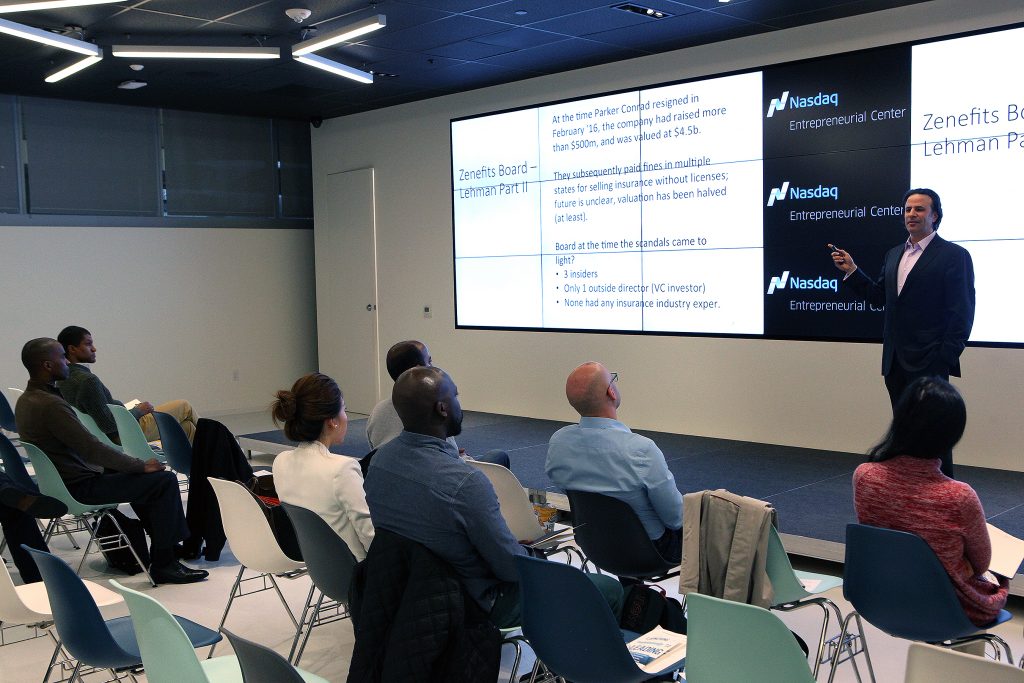If small-cap companies, and the professional service providers who advise them, comprehended how an institutional investor *actually* reviews corporate websites, websites would look a lot different than they do.
I recently had dinner with some former buy-side colleagues. I asked them: “How many of you, in the last couple of months, have ruled out investing in a small-cap company purely based on your review of their website?” Every investor raised their hand or nodded yes.
These practical, frank takeaways from that dinner may help small public companies in need of financing improve their websites – and their cash flow.
The basics. We all agreed at dinner that it’s amazing how many small-cap websites have an antiquated look and feel, and aren’t responsively designed (i.e., optimized for mobile consumption). Moral: if your company’s website hasn’t undergone a refresh in the last 24-30 months… it’s time. As one investor aptly observed: “Having an outdated website in this day and age is like showing up to an important job interview with a huge coffee stain on your shirt.”
Above the fold. If an average cocktail party attendee can’t understand enough about what your company does to explain it accurately to someone else in their own words after perusing the top section of your website’s homepage for 30 seconds or less, your company has failed investor communications 101 – full stop. If you’re thinking that most small-cap companies easily pass this test… think again. A couple of years ago, I hosted a dinner for 15 small-cap technology and life science CEOs at an investor conference to discuss buy-side perspectives on common capital markets situations, and I undertook this test on their behalf. Fourteen of the websites failed the test. The next night I hosted another dinner with a new group of 15 CEOs. The same test was administered. Thirteen of the websites failed the test.
Stick to the facts. Just as the length of a small-cap company’s PowerPoint investor presentation is often inversely proportional to the quality of the company, seasoned investors know that dramatic, overly-produced websites are compensating for substandard operating companies. Moreover, from a practical standpoint, websites that have long load times are simply going to get overlooked. When in doubt regarding tone – less is more.
It’s what you’re not being told, that matters most. Very nearly every CEO I speak with believes their company’s website is terrific (or, at a minimum, adequate). Therein lies an interesting conundrum: if investors were being repelled one after the other by a company’s website, how would the company know? The answer very often is: they probably wouldn’t. Why? Because investors rarely give investor relations firms or CEOs fulsome explanations for their disinterest; it’s easier to simply say, “I don’t think it’s for us – thanks.” To underscore the point, during my tenure as an institutional investor, our firm ruled out investments in dozens of small-cap companies after reviewing their websites and never told anyone outside of our firm why.
We live in a video world. Particularly if your company’s stock is predominantly traded by non-professional (i.e., retail) investors, it is mandatory in today’s marketplace for the top portion of your website’s homepage to contain a short video (preferably less than two minutes) depicting what your company does in plain English (i.e., it needs to pass the “cocktail party” test). This is particularly important for technology and life science companies. Why? Because experienced investors know that buying stock is one thing, but at some point, there needs to be someone to sell it to. If no one else understands what your company does, it becomes like the old commercial for the Roach Motel (i.e., “investors can get in, but they can’t check out”).
Hiding the goods. After investors watch the video and review the “About Us” verbiage, the next place they are headed is to management and board bios, because small-cap investors wager principally on “jockeys” not “horses.” Inexplicably, small-cap websites often hide officer and director bios several clicks away within the investor relations portion of the website. If that weren’t bad enough, some small-cap websites list officer and director names but contain no bios. A few comments in this regard: (1) every small-cap company should put officer and director bio links in the “About Us” dropdown menu, or opt for similarly intuitive home page navigation directly to those bios (i.e., definitely no more than “two-clicks” away); (2) when officer and director bios are any more challenging to locate than that, investors all have the same reaction — there is a reason this company is hiding this information; and (3) have proper, formal SEC-type bios for all relevant officers and directors on the site (i.e., don’t send investors to LinkedIn or securities filings).
I explore these issues in much more detail, as well as other common, lethal website shortcomings in a free, on-demand webinar, here. Or download the Buy-Side Website Evaluation Checklist by clicking the graphic below.
This article was originally published on LinkedIn Pulse.
________________



